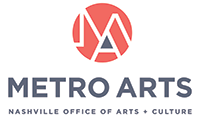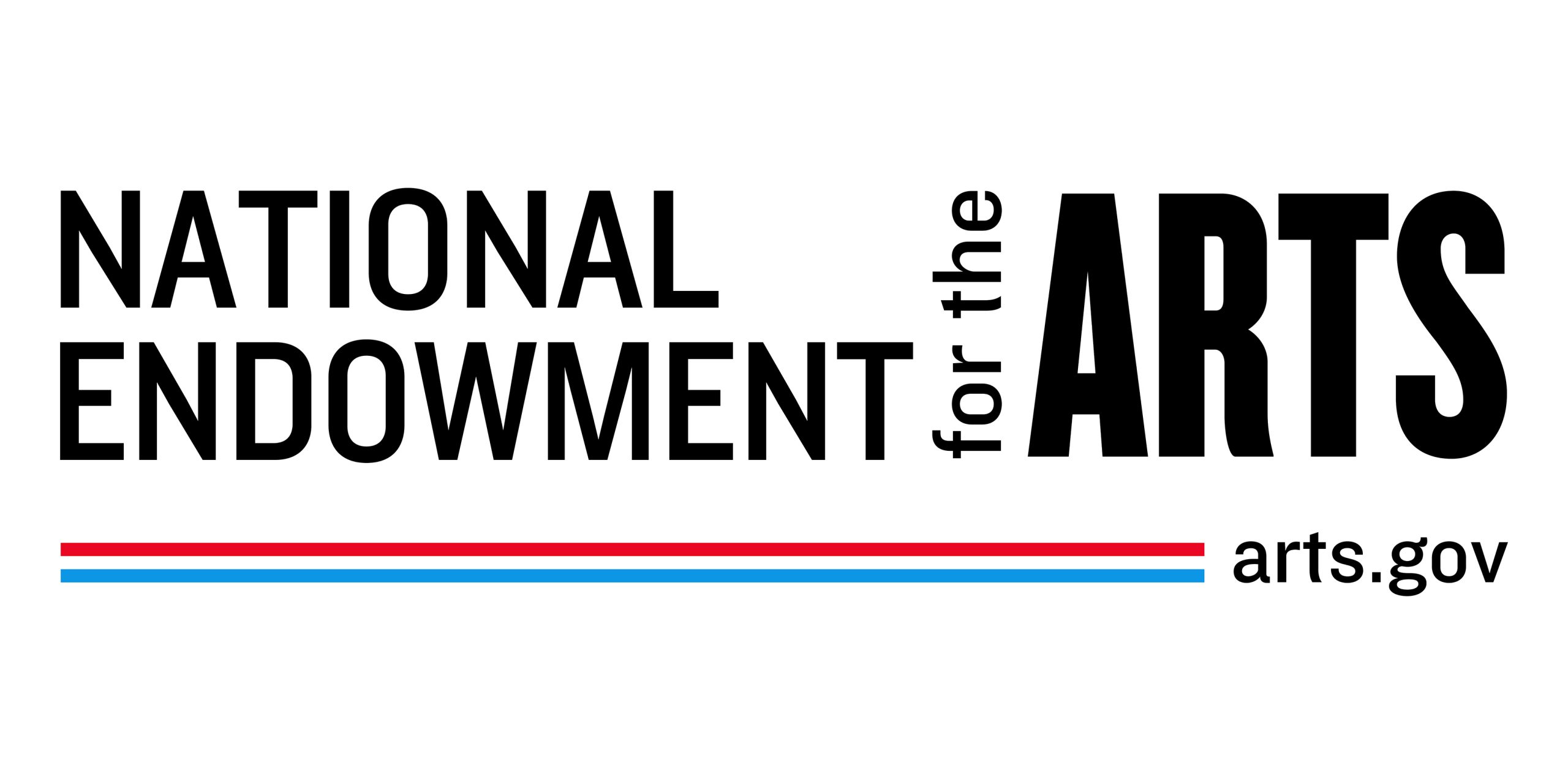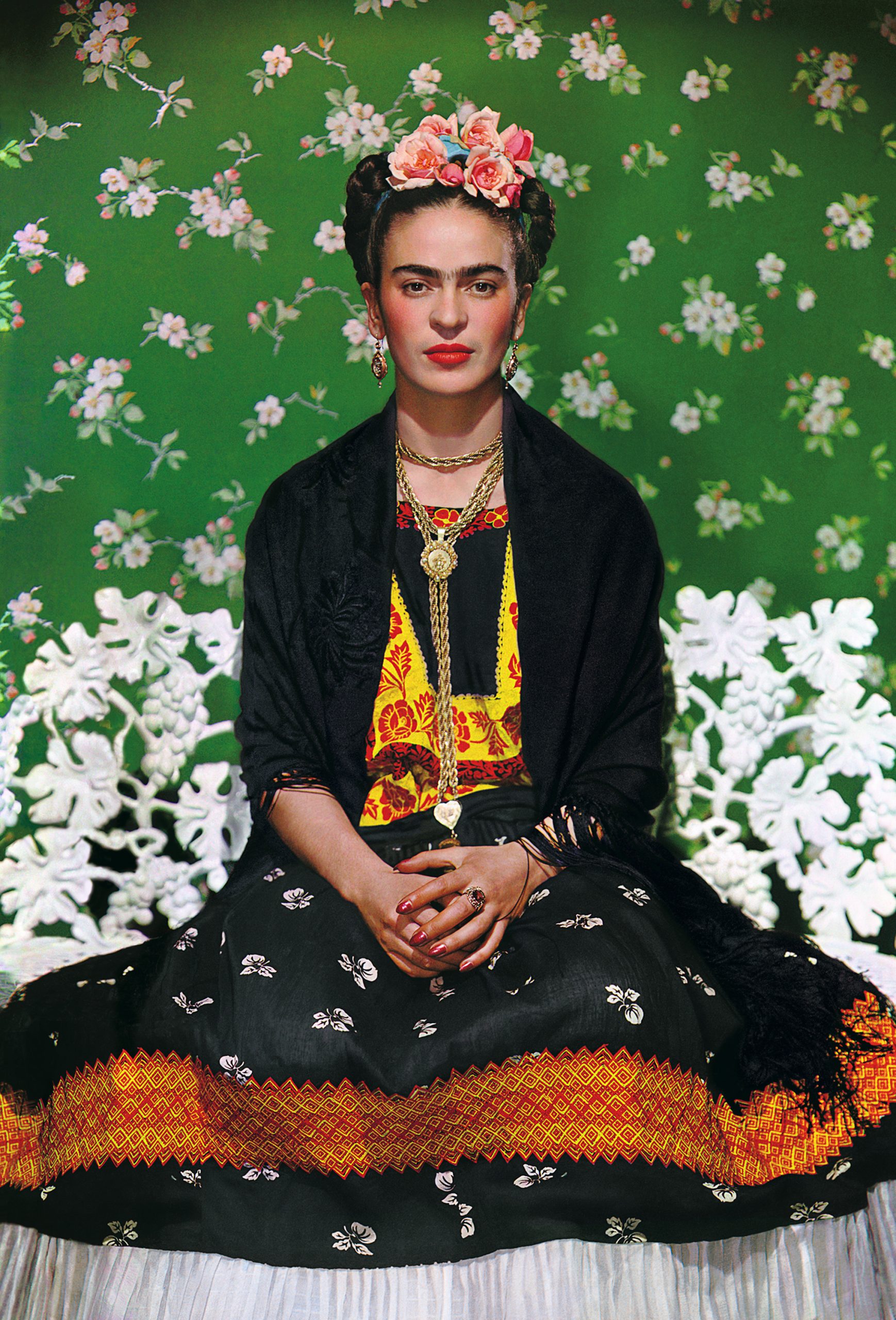This exhibition captures the vitality and expressiveness of twentieth-century Mexican art with iconic works by Frida Kahlo, her husband Diego Rivera, and their contemporaries, including Manuel Álvarez Bravo, María Izquierdo, José Clemente Orozco, and David Alfaro Siqueiros. Among the more than 150 works on view will be seven painted self-portraits by Kahlo, Rivera’s Calla Lily Vendor, and numerous portraits of the Gelmans, plus more than fifty photographs that provide insight into Kahlo and Rivera’s passionate love affair and how the couple lived, worked, and dressed.
Husband-and-wife collectors Jacques and Natasha Gelman were glamorous and wealthy Eastern European refugees who married in Mexico in 1941, took part in Mexico City’s vibrant art scene, and acquired art mostly from their artist friends. In 1943, Jacques commissioned a full-length portrait of Natasha from Rivera, Mexico’s most celebrated painter. “The Gelmans formed close friendships with many artists in this exhibition, often acting as patrons and promoters of their careers and assembling one of the finest collections of modern Mexican art in the world along the way,” says Frist Art Museum curator Trinita Kennedy.
Born in 1907 in Coyoacán, a suburb south of Mexico City, Kahlo had a difficult childhood, facing a bout with polio at age six and a bus accident at the age of 18 that left her disabled and often bedridden. “It was during her recovery from the accident that Kahlo began to paint, in part because she was bored in bed. She spent hours alone with an easel and a mirror painting her own face,” says Kennedy. “She never attended art school, but as she considered a career as an artist, she sought out several of Mexico’s leading painters, including Rivera, whom she had met several years earlier.” Their friendship became a courtship, with the two marrying in 1929. Unfaithful to each other, the pair divorced in 1939, only to remarry in 1940.
In the early twentieth century, Mexico’s artistic avant-garde was closely tied to political and social revolution. Following Mexico’s civil war from 1910 to 1920, the government enlisted male painters to produce monumental murals in public buildings. Rivera was a revered figure in this muralism movement and an avowed Communist. “Using art, which could be understood by the masses, Rivera, Orozco, Siqueiros and others helped Mexico fashion a new identity rooted in its own unique history,” says Kennedy.
Rivera’s artistic works, as well as his vocal opinions on the role of art, would shape the development of Mexican culture throughout the first half of the twentieth century. “His depictions of Mexican traditions and everyday life soon came to epitomize Mexican culture at home and abroad, including the United States where he created murals in San Francisco, Detroit, and New York,” says Kennedy. Rivera also created easel paintings representing poignant scenes of everyday life and labor in Mexico, such as Calla Lily Vendor, a luminous painting that celebrates the beauty and strength of Mexico and its people.
Like Rivera, Kahlo infused her work with mexicanidad, an identification with Mexico’s distinct national history, traditions, culture, and natural environment, but in a much more personal way. About a third of her paintings are self-portraits, the works for which she is now most celebrated. They accentuate her distinctive appearance, characterized by a v-shaped unibrow, deep brown eyes, mustache, carefully coiffed hair with braids, and indigenous Mexican clothing. In Diego on My Mind (Self-Portrait as Tehuana), for example, she crowns herself with a festive indigenous Mexican headdress known as a resplandor.
Known primarily in artistic circles during her lifetime, Kahlo’s paintings began to attract widespread international attention in the decades following her death. Her work and life story continued to resonate in pop culture with the success of Frida, a 1983 biography by Hayden Herrera, and the 2002 biopic Frida, starring Salma Hayek.
The exhibition includes more than fifty photographs of Kahlo, most of which were taken by noted photographers, such as Lola Álvarez Bravo, Nickolas Muray, and Edward Weston. There is also a special gallery focused on Kahlo’s unique personal style, which offers insight into her wardrobe, hairstyles, and jewelry. An interactive touchscreen allows visitors to explore elements of her clothing and to learn why she wore them. The exhibition concludes with haunting black-and-white photographs of Kahlo’s crutches, corset, and bed, taken recently at the Casa Azul, her former home in Coyoacán, by contemporary artists, including Patti Smith. “Directly associated with her pain, these objects are venerated as relics,” says Kennedy. “As the photos attest, Kahlo’s ability to create magical paintings despite the suffering caused by her broken body captivates and inspires many of us today.”
The works collected by the Gelmans offer an unrivaled opportunity to encounter the chaotic and creative Mexican art world of the first half of the twentieth century in all its complexity. Modern Mexican art exerted a key influence on modern art in the United States, and its impact continues to be felt throughout the world today.
Organized by the Vergel Foundation and MondoMostre in collaboration with the Instituto Nacional de Bellas Artes y Literatura (INBAL)

About MondoMostre
Over the last 20 years, MondoMostre has partnered with museums around the world, providing exhibition planning services. Offices in Rome, Milan, Moscow, Beijing, Tokyo, Boston, and Mexico City provide services, including support for concept development, production, registration, insurance, shipping, publication services, marketing, advertising, exhibition placement, and exhibition strategy consulting. MondoMostre puts its expertise to the service of museums everywhere to help them create world-class exhibitions in its broad international network.
As of now the company has organized 162 exhibitions with 83 institutions in 47 cities, generating a total of 25 million visitors worldwide. Some of the more important exhibitions have featured work by Botticelli, Caravaggio, Leonardo, Hokusai, Hiroshige, Kuniyoshi, Picasso, Dalí, Kahlo, Rivera, Manet, Vermeer, and Rembrandt. Partner institutions have included the Uffizi, the Capitolini, the Vatican, the Capodimonte Museum, the Pushkin Museum in Moscow, the Hermitage in Saint Petersburg, the National Museum of China, the National Museum of Western Art in Tokyo, and the Musée Picasso-Paris.
CONNECT WITH US!
#FristArtMuseum
#FristMexMod
Exhibition gallery
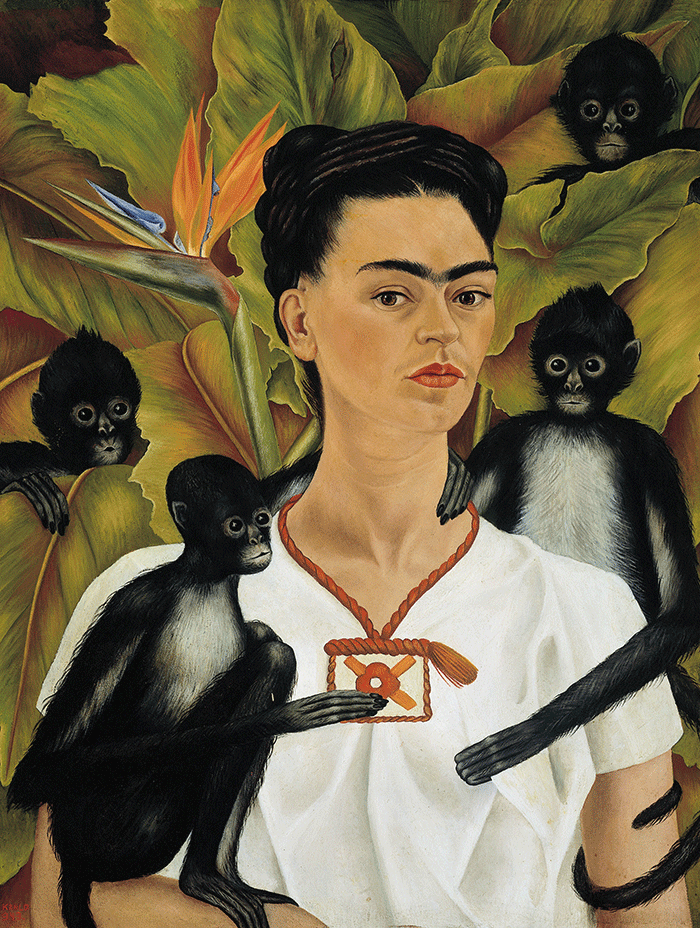
Frida Kahlo (Mexican, 1907–1954). Self-Portrait with Monkeys, 1943. Oil on canvas, 32 1/8 x 24 3/4 in. The Jacques and Natasha Gelman Collection of 20th Century Mexican Art and the Vergel Foundation. © 2019 Banco de México Diego Rivera Frida Kahlo Museums Trust, Mexico City / Artists Rights Society (ARS), New York
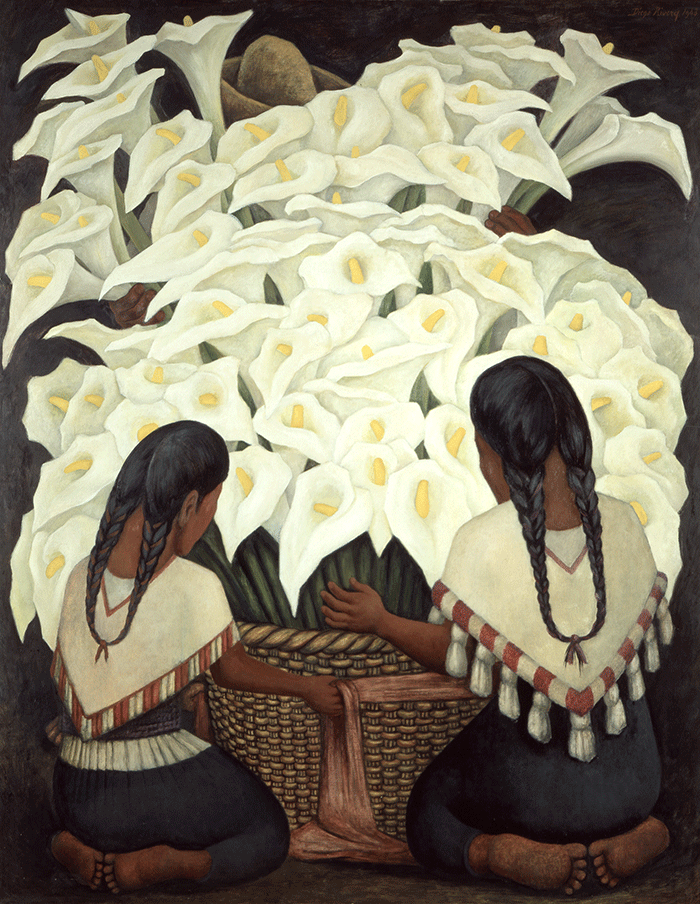
Diego Rivera (Mexican, 1886–1957). Calla Lily Vendor, 1943. Oil on Masonite, 59 x 47 1/4 in. The Jacques and Natasha Gelman Collection of 20th Century Mexican Art and the Vergel Foundation. © 2019 Banco de México Diego Rivera Frida Kahlo Museums Trust, Mexico City / Artists Rights Society (ARS), New York
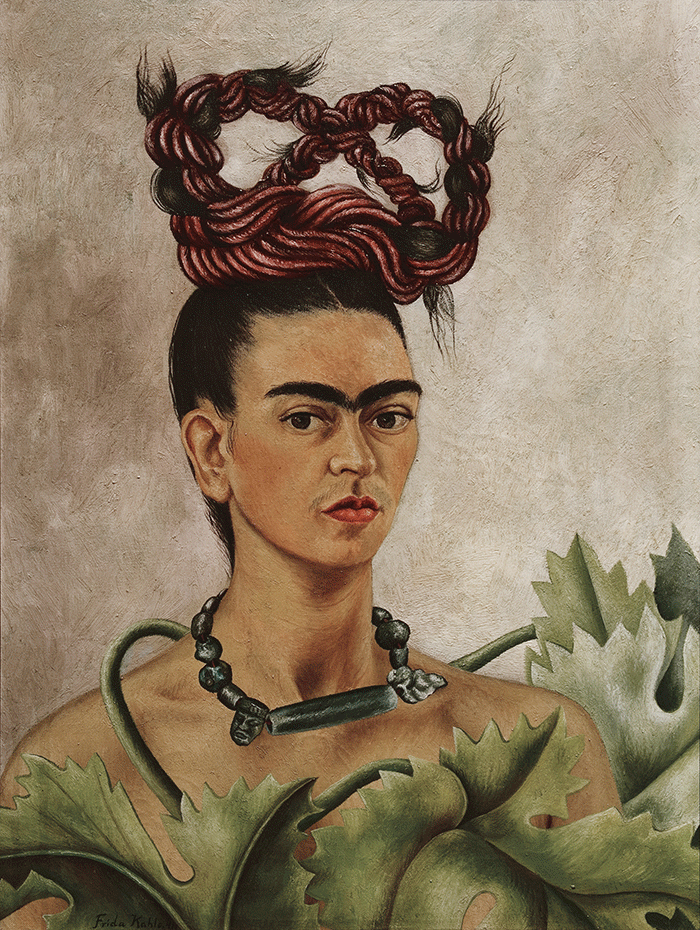
Frida Kahlo (Mexican, 1907–1954). Self-Portrait with Braid, 1941. Oil on canvas, 20 7/8 x 15 3/8 in. The Jacques and Natasha Gelman Collection of 20th Century Mexican Art and the Vergel Foundation. © 2019 Banco de México Diego Rivera Frida Kahlo Museums Trust, Mexico City / Artists Rights Society (ARS), New York
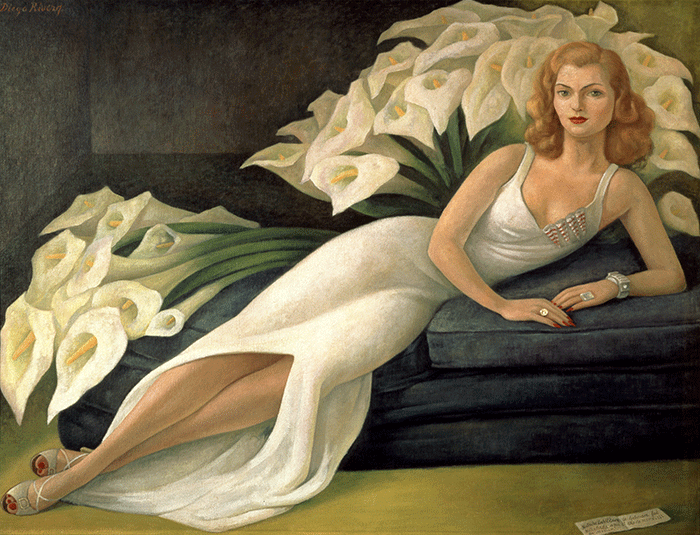
Diego Rivera (Mexican, 1886–1957). Portrait of Natasha Gelman, 1943. Oil on canvas, 45 1/4 x 60 1/4 in. The Jacques and Natasha Gelman Collection of 20th Century Mexican Art and the Vergel Foundation. © 2019 Banco de México Diego Rivera Frida Kahlo Museums Trust, Mexico City / Artists Rights Society (ARS), New York

Frida Kahlo (Mexican, 1907–1954). Diego on My Mind (Self-Portrait as Tehuana), 1943. Oil on Masonite, 29 7/8 x 24 in. The Jacques and Natasha Gelman Collection of 20th Century Mexican Art and the Vergel Foundation. © 2019 Banco de México Diego Rivera Frida Kahlo Museums Trust, Mexico City / Artists Rights Society (ARS), New York
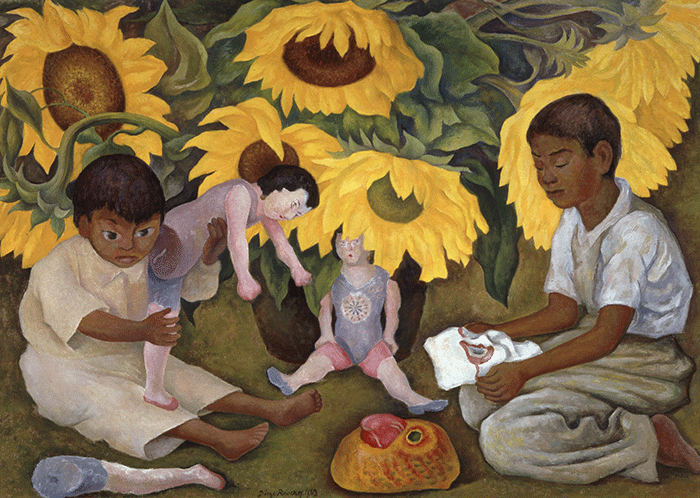
Diego Rivera (Mexican, 1886–1957). Sunflowers, 1943. Oil on canvas, 35 3/8 x 51 1/8 in. The Jacques and Natasha Gelman Collection of 20th Century Mexican Art and the Vergel Foundation. © 2019 Banco de México Diego Rivera Frida Kahlo Museums Trust, Mexico City / Artists Rights Society (ARS), New York
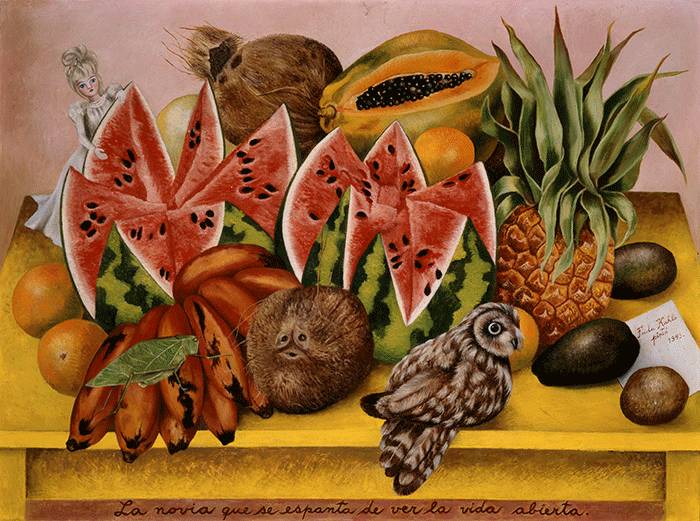
Frida Kahlo (Mexican, 1907–1954). The Bride who Becomes Frightened When She Sees Life Opened, 1943. Oil on canvas, 24 3/4 x 32 1/8 in. The Jacques and Natasha Gelman Collection of 20th Century Mexican Art and the Vergel Foundation. © 2019 Banco de México Diego Rivera Frida Kahlo Museums Trust, Mexico City / Artists Rights Society (ARS), New York
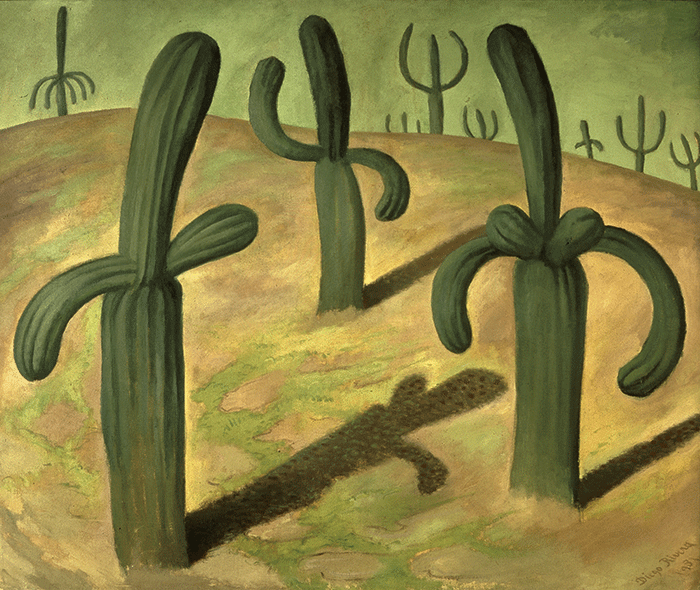
Diego Rivera (Mexican, 1886–1957). Landscape with Cacti, 1931. Oil on canvas, 49 3/8 x 59 in. The Jacques and Natasha Gelman Collection of 20th Century Mexican Art and the Vergel Foundation. © 2019 Banco de México Diego Rivera Frida Kahlo Museums Trust, Mexico City / Artists Rights Society (ARS), New York
Resources
Thank you to our exhibition supporters




